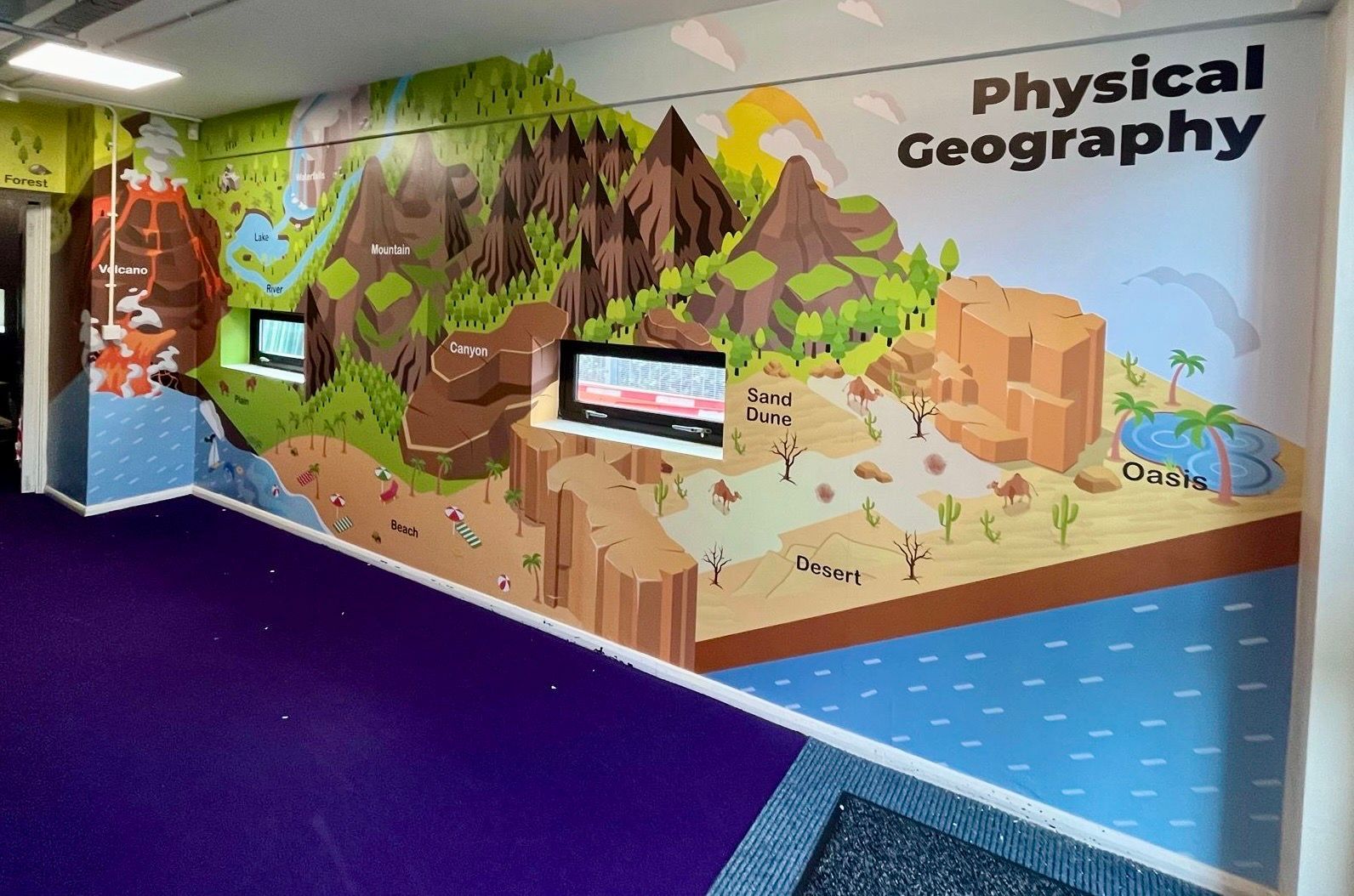Impact on pupils 20
Interactive wall visuals that prompt students to contribute – such as completing diagram sections, expanding a storyline, or noting the weather – foster engagement and transform passive watching into a learning experience.

Enhancing Engagement and Encouraging Interaction through Interactive Wall Graphics
Transforming observation into learning through interactive wall graphics that prompt student engagement can enhance participation and involvement in learning. Here are effective ways to design and implement wall graphics;
Key Elements to Consider When Designing Interactive Wall Graphics
Blank Diagram Templates;
- Engaging Diagram Activities: Design diagrams with sections for students to complete using markers or magnetic tags. For instance. They label the components of a flower, human anatomy, or stages in the water cycle.
- Utilise dry-erase or chalkboard surfaces for students to write on directly.
Story and Sentence Completion;
- Design story panels that illustrate a narrative, with areas where students can insert their words or sentences to encourage creativity and language development.
- Utilise words or phrases that students can rearrange to finish sentences or form new ones.
- Let's design a board where students can represent the weather using symbols or movable pieces.
- Design a tree or landscape mural that students can enhance with changing leaves for fall or winter snowflakes and spring flowers to reflect the seasons as they evolve.
- When studying geography, with world maps in education settings or classroom settings, it can be beneficial to utilise maps with flags or markers that students can place on countries to aid in learning the locations and details of different regions on the map.
- Students can use growth charts to mark themselves and keep track of their height throughout the school year.

Strategic Positioning for Optimal Influence
- Let's set up an area on the classroom wall for fun learning activities, like completing diagrams or creating story panels.
- Incorporate a section of the classroom for updates, like weather reports or a "word of the day" board.
Aisles;
- Revamped Hallways Idea: Revise the layout of hallways by incorporating features, like maps and charts, for students to interact with while moving between classes.
- Utilise hallway areas to showcase displays corresponding to the subjects covered in the curriculum or reflecting themes.
Common Areas for Recreation;
- Let's set up designated areas around the school where students can participate in fun activities like finishing stories or adding to murals.
- Use murals that feature elements or writable surfaces to inspire students to engage during their leisure time.
Approach to Execution Strategy
- Let's work together on the design process.
- Involving teachers and students in the design process ensures that the visuals align with objectives and appeal to their interests.
- Experienced designers collaborate with designers to produce notch and captivating visuals.
Choosing Materials;
- Choose harmless materials for kids to play with that are both durable and safe.
- Consider choosing materials as a way to support ecological sustainability.
Installation by a professional;
- Make sure to have a handle on the installation to guarantee safety and aesthetics while preventing alignment or damage concerns.
- Make sure to place the graphics at a height children can see and reach easily.
- Don't forget to clean and maintain your graphics to ensure they stay fresh and engaging over time.
- Let's update the content to bring ideas and maintain an engaging and lively environment.
A diagram showcasing plant features;
- Let's create a plant chart featuring labelled components, like roots, stems, twigs, flowers and leaves, using magnetic or velcro tags that students can easily attach to the correct spots on the chart.
- Engagement with the subject matter enriches comprehension of plant structure through involvement.
The wall where stories are completed;
- They are creating design elements that feature initial story scenes, with sections for students to insert words or sentences using magnetic or dry-erase markers.
- Encouraging creativity and enhancing language skills, the practice enables students to come up with their conclusions and endings for stories or tasks.
The weather and season board;
- This board features weather symbols, like the sun and rain, and seasonal elements, such as leaves and snowflakes, that students can change daily.
- Teaches about weather patterns and seasonal changes by engaging.
- A map you can interact with and explore to discover locations worldwide.
- How about creating a world map with flags or markers that students can attach to countries to learn geography?
- Encourages understanding of geography and different cultures by engaging in exploration.
Wrapping it up, some reflections.
Schools can develop captivating educational settings that promote active involvement and enrich learning by adding features to wall designs. The graphics enhance the school's aesthetics while offering advantages by turning learning into a hands-on and engaging experience. This method encourages inquisitiveness, creativity and a passion for knowledge, aiding students’ growth and achievements.










